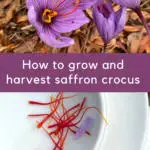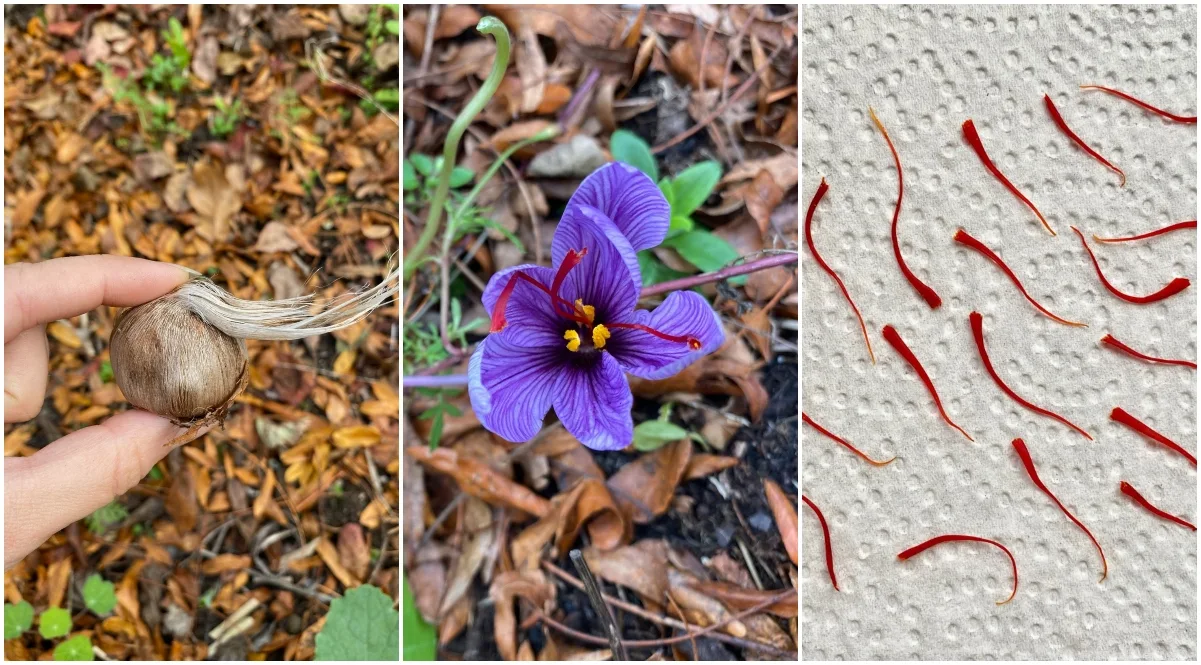
What if I told you that you could plant something in your garden that’s worth its weight in gold?
No, I haven’t yet found the seeds of the mythical money tree to that end. But I have decided to plant saffron crocuses in my garden, and that’s (almost) the same thing.
Here’s how to plant saffron bulbs and why it’s such an expensive crop.
Can you get saffron from any crocus?
Not all crocuses produce this delicious spice. You can only harvest saffron from the saffron crocus (Crocus sativus).
Because this crocus variety blooms in the fall, it’s often mistaken for the autumn crocus (Colchicum autumnale). Both plants bloom in the fall, are grown from corms and have similar colors. In fact, Colchicum autumnale is not a true crocus, but a member of the Colchicaceae family and it’s highly toxic.
So if it’s saffron you’re after, make sure that what you’re ordering is Crocus sativus corms, not just simply “autumn crocus” corms.
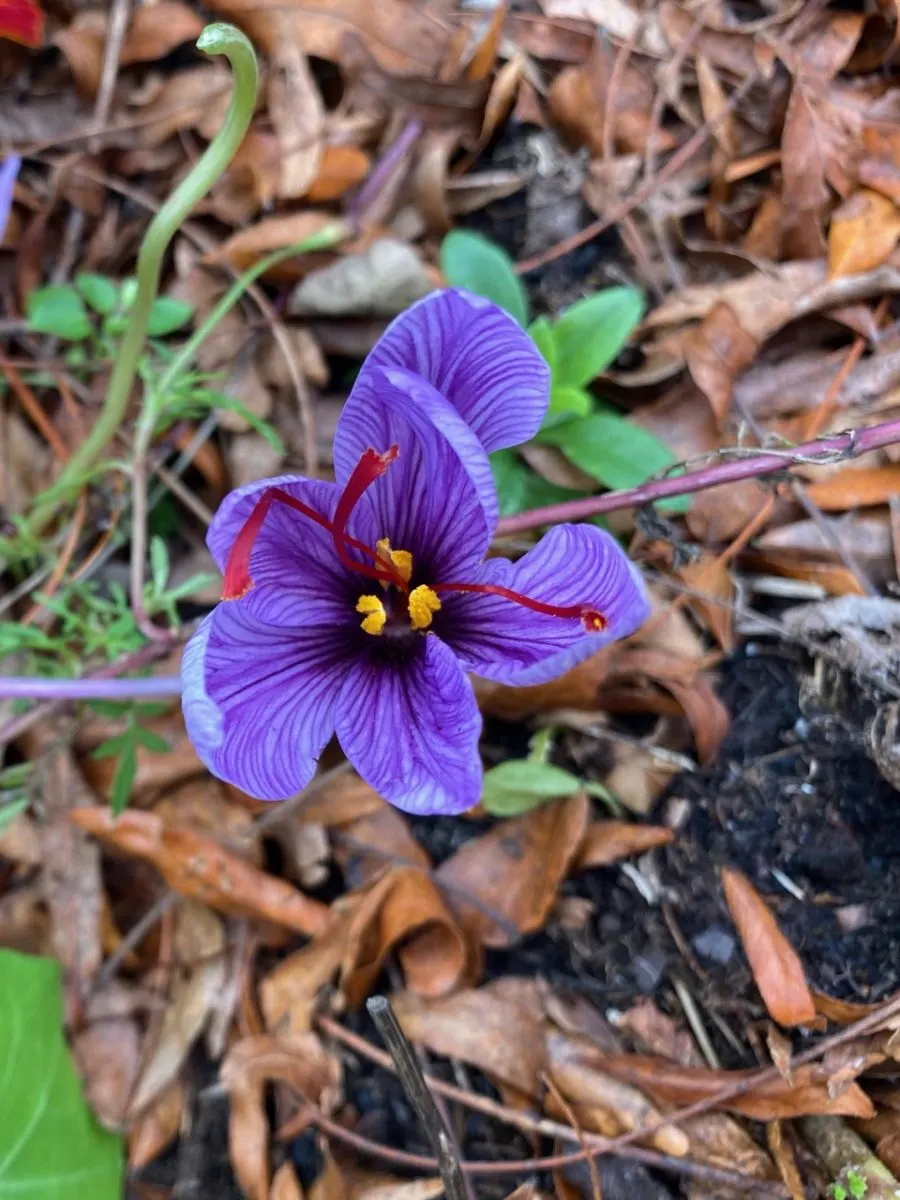
What is saffron?
Saffron is the most expensive spice in the world, by weight. It’s not particularly hard to grow, but it takes about 75,000 flower bulbs to produce a pound of saffron, according to Britannica. Saffron is essentially the dried stigmas and styles of the Crocus sativus flower, and every bloom produces only three filaments.
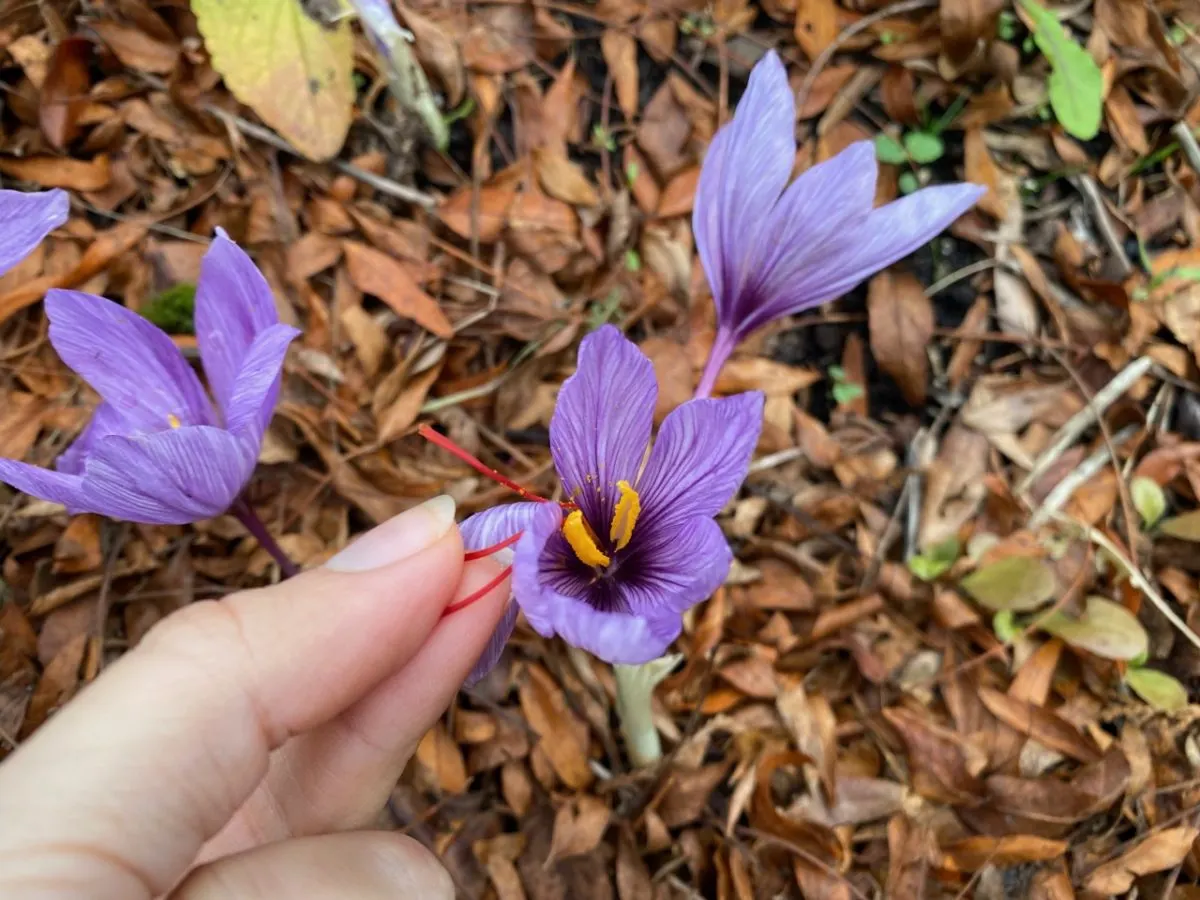
The bloom is so delicate that every strand needs to be harvested by hand. And since the plant is open for a short period of time (often less than a week) in the fall, there’s a short window for harvesting.
So it’s not scarcity that makes saffron an expensive delicacy, but the time-bound and labor-intensive nature of this crop.
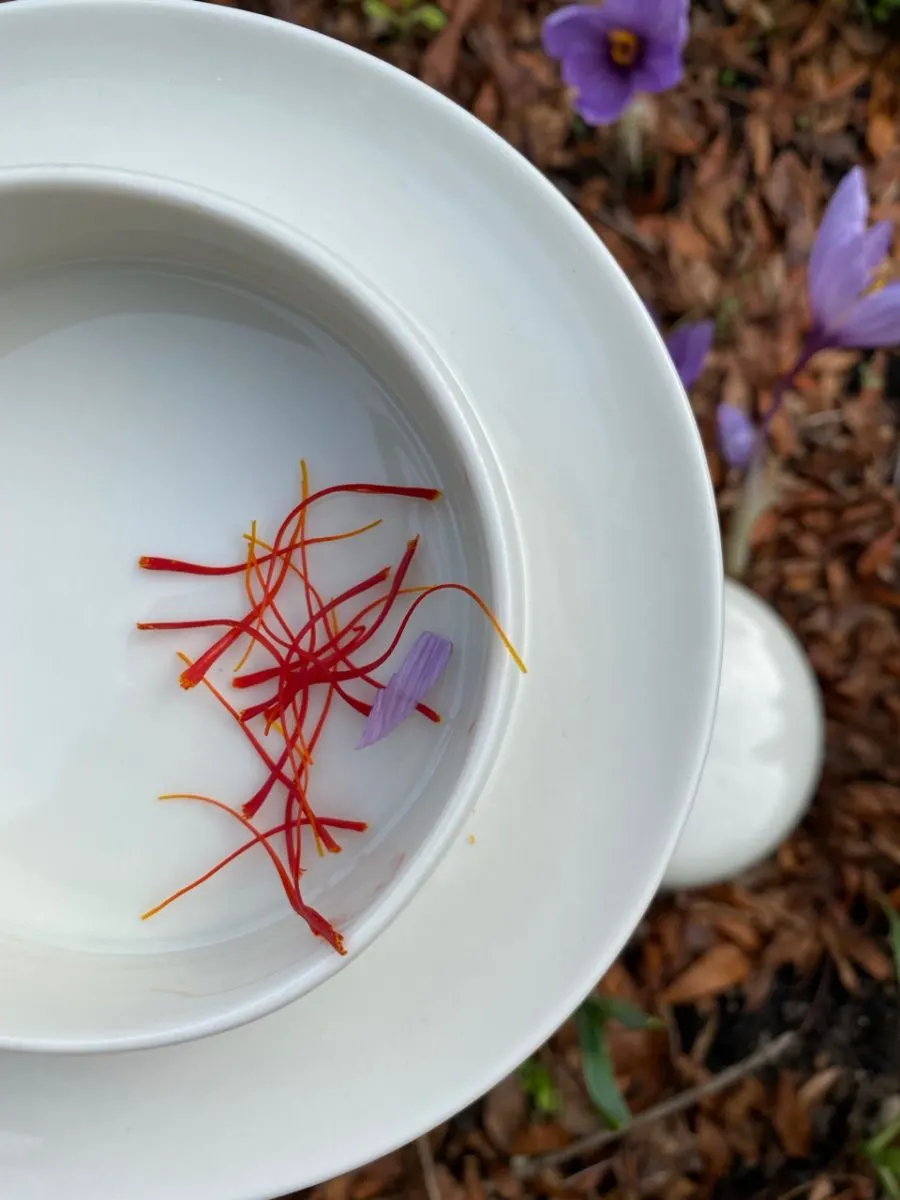
What does saffron taste like?
It’s tricky to describe saffron to someone who’s never tasted it, but let me give it a try. The flavor of saffron is a combination of earthy tones mingled with a floral hint and a bit of the sweetness of vanilla. It adds a depth of flavor to rice-based dishes such as paella and risotto, but you can also use it in desserts such as Spanish saffron cake and orange rice pudding.
Let’s just say that, once you’ve tasted a dish infused with saffron, you’ll be able to tell if this ingredient is missing from said dish next time you have it.
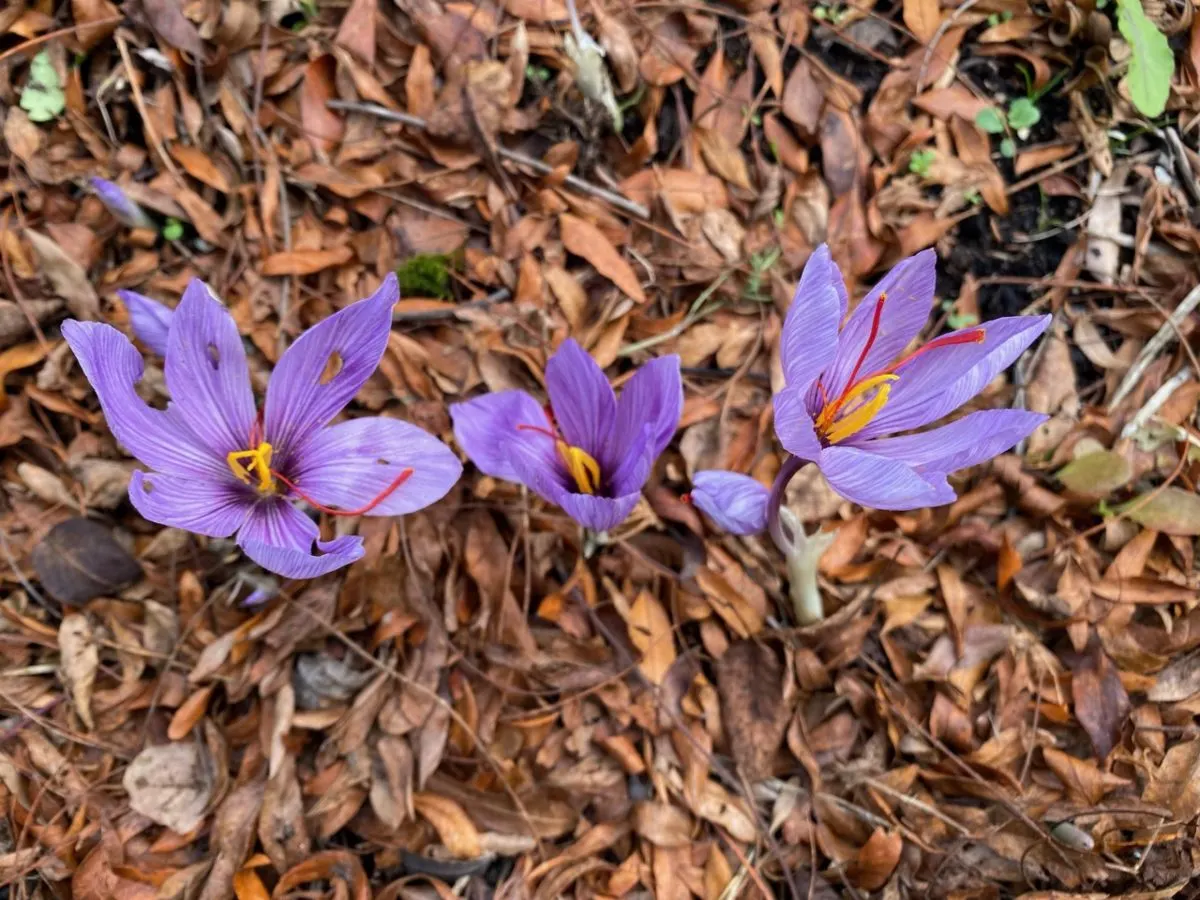
The good news is that you only need a little bit of saffron (just a few strands) to flavor a meal. If you use too much, the flavor tends to morph into a bitter aftertaste.
The trick with buying saffron is that if the price is too good to be true, then it’s probably not real saffron. What you’re buying may be powdered saffron (often cut with red paprika powder) or old saffron that has lost its flavor.
That’s why I encourage you to grow your own saffron as a means to get the freshest possible version of this spice.
How to Grow Saffron Crocus
For years, I had managed to convince myself that growing my own saffron was a very finicky affair. I think I was probably influenced (and a bit overwhelmed) by the price of saffron at my local health food stores. How could something so expensive be so easy to grow?
It turns out that saffron crocus is very easy to grow. Just as easy as any other bulb, in fact. Here’s how to do it.
Step 1: Start with high-quality bulbs.
I grow everything that we eat organically, so it was important to me to buy high-quality organic Crocus sativus bulbs. By the way, crocuses grow from corms, not true bulbs, for the sake of simplicity, I’ll use both terms throughout this article.
You’ll recognize the saffron crocus bulbs by their very hairy appearance. They look like stylish supermodels.
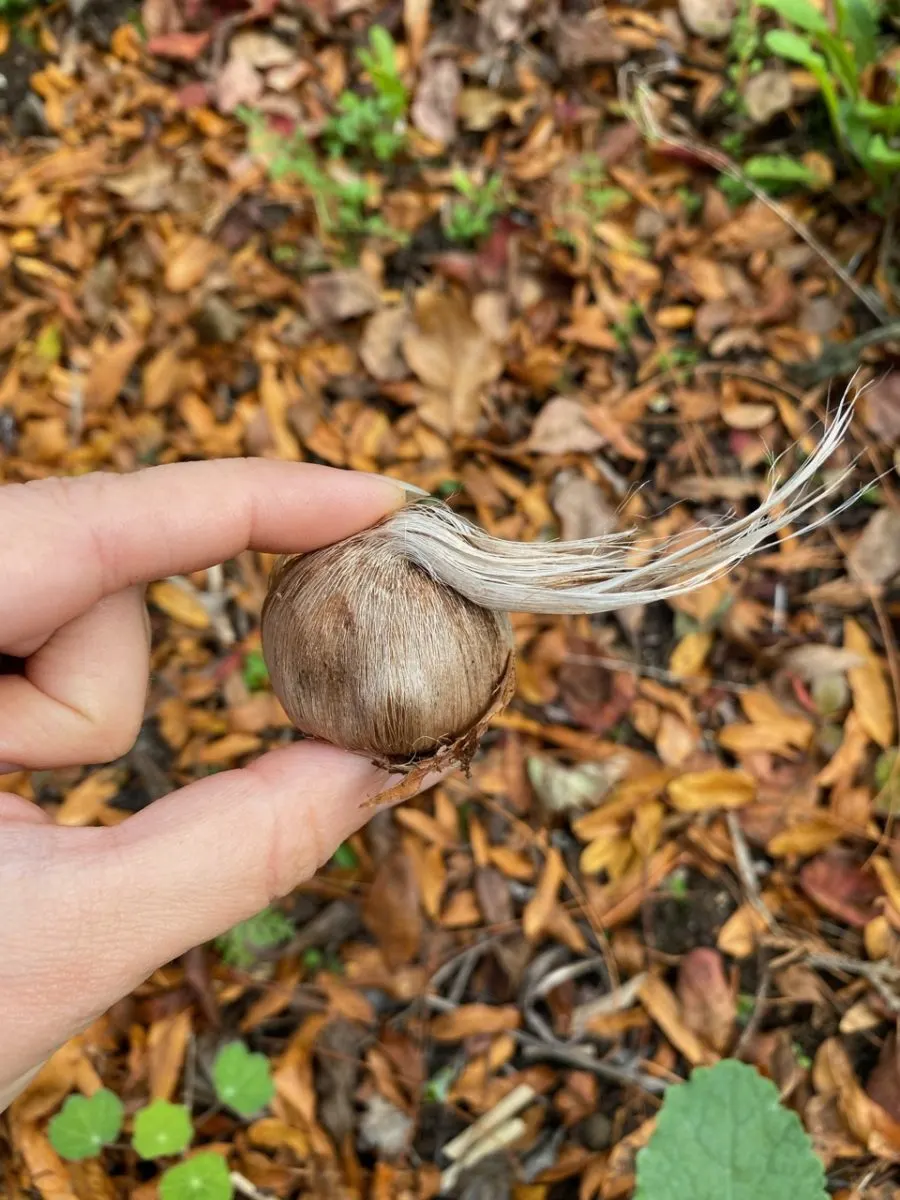
I received my bulb order in late September, but due to the very warm weather we were having, I decided to hold off on planting them. In the meantime, they had a different idea. Some of the bulbs started sprouting in the paper bag they were delivered in, despite my best effort to keep them in a cool, dark place.
Since these crocuses bloom in the fall, the sprouting is normal and to be expected. You can still plant sprouting bulbs, although you shouldn’t wait too long before you get them in the ground.
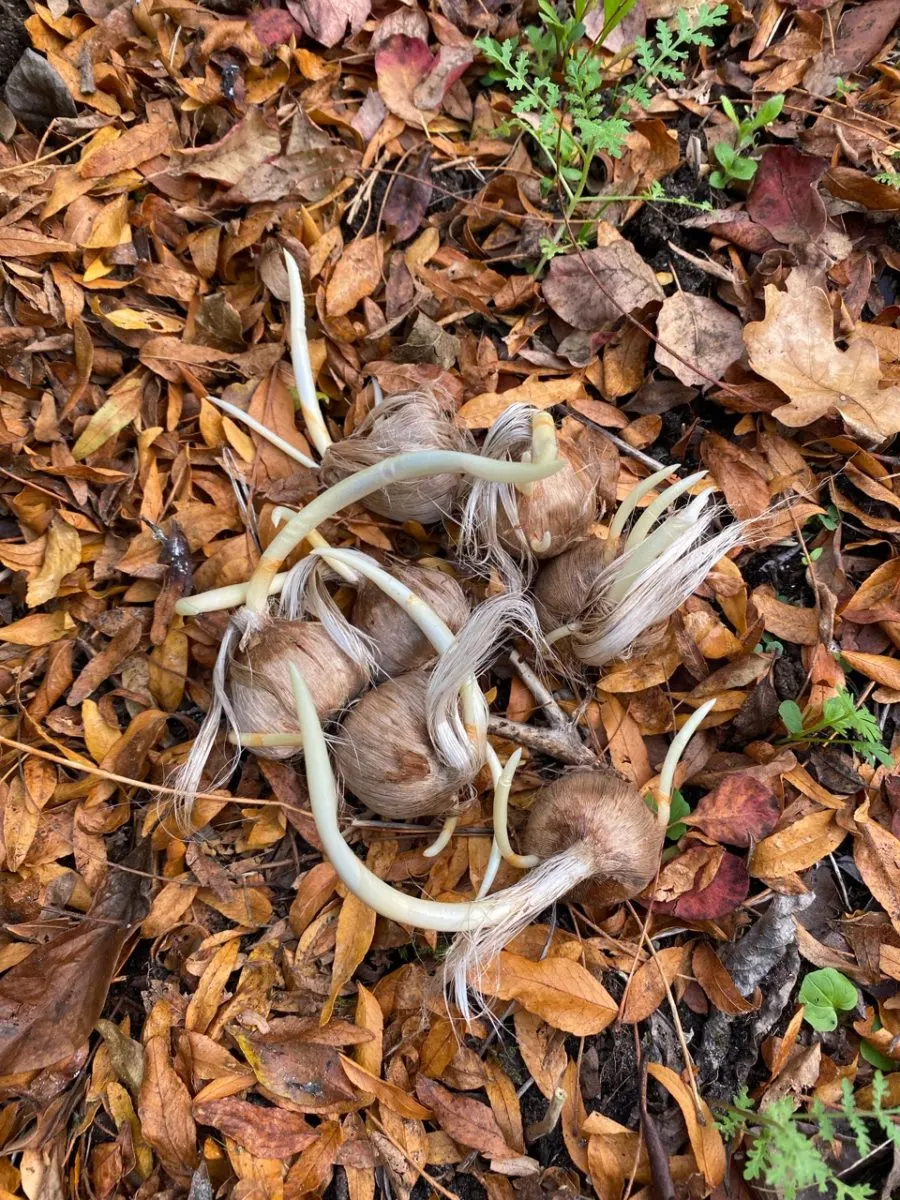
Step 2: Choose the right location for planting.
The most important thing you should know about saffron crocuses is that they will perennialize. This was also one of the main considerations why I decided to plant this crop. You don’t have to replant it every year, but you do have to give it enough room to multiply underground.
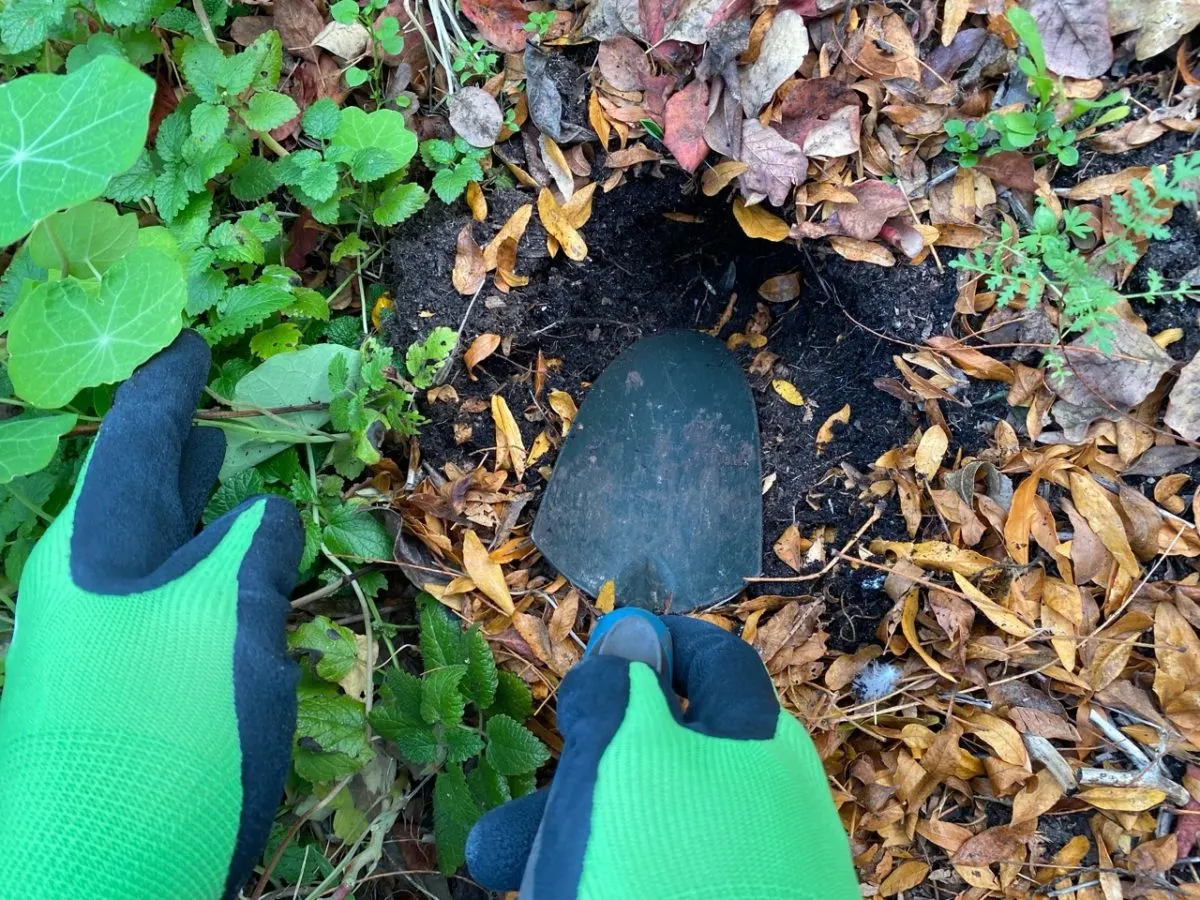
So knowing that you will leave your bulbs underground year round, choose a spot where you’re less likely to disturb them very often. Saffron crocus bulbs are not very fussy, but they’ll give you the best results if you plant them in well-draining soil that gets at least a few hours of sunshine during the day. It’s very hardy to low temperatures, so the exposure of your site isn’t that important.
However, saffron crocus will not grow well in soil that’s heavy in clay or in a location that stays very wet for very long. If that’s the case in your yard, you can grow saffron crocuses in containers with good results.
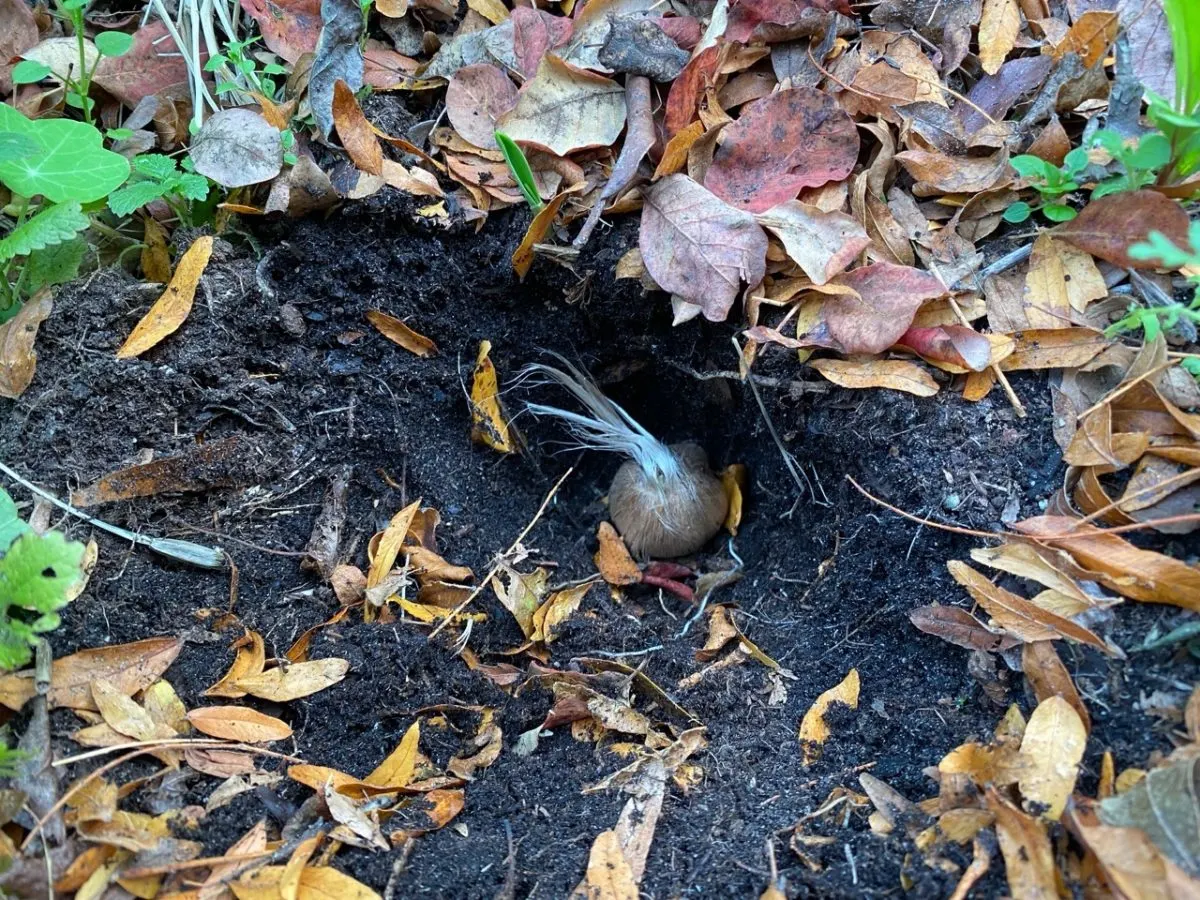
I’m planting twenty bulbs. And because space is at a premium in my suburban garden, especially for perennializing, I’m bending the rules of spacing and placing the corms closer together in about six clumps and scattering a few around as well. So every planting hole will hold a couple of bulbs – spaced far enough to allow bulb division, but close enough to create a rich display in just a couple of years.
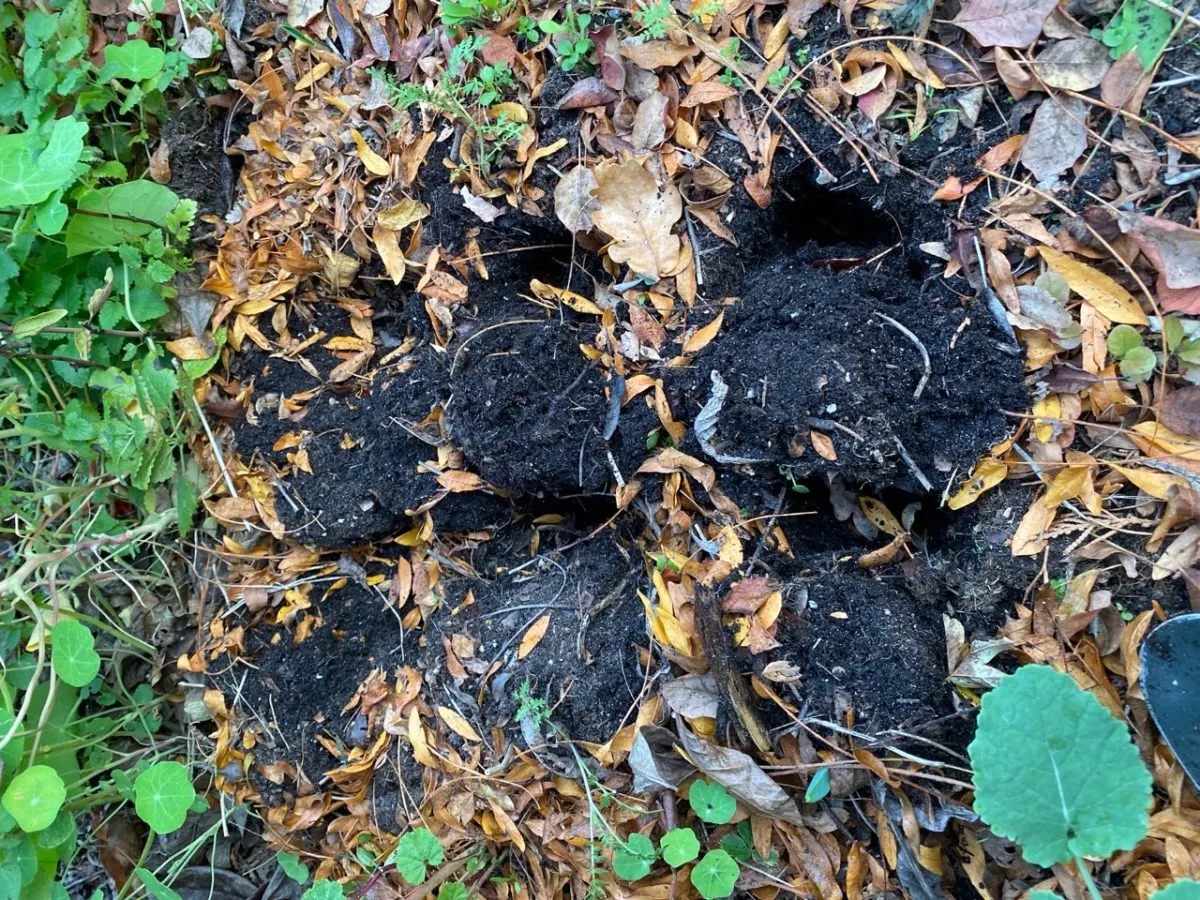
Step 3: Plant your Crocus sativus corms.
You can plant your Crocus sativus in the fall, anytime from September to November. Ideally, you should get them in the ground about a month before the first ground-level frost. Like all bulbs, they need to be planted about three times the height of the bulb with the pointy end facing up and the root end buried deep down.
My bulbs were about 2 inches (5 cm) in height, so I buried them about 6 inches deep (roughly 15 cm).
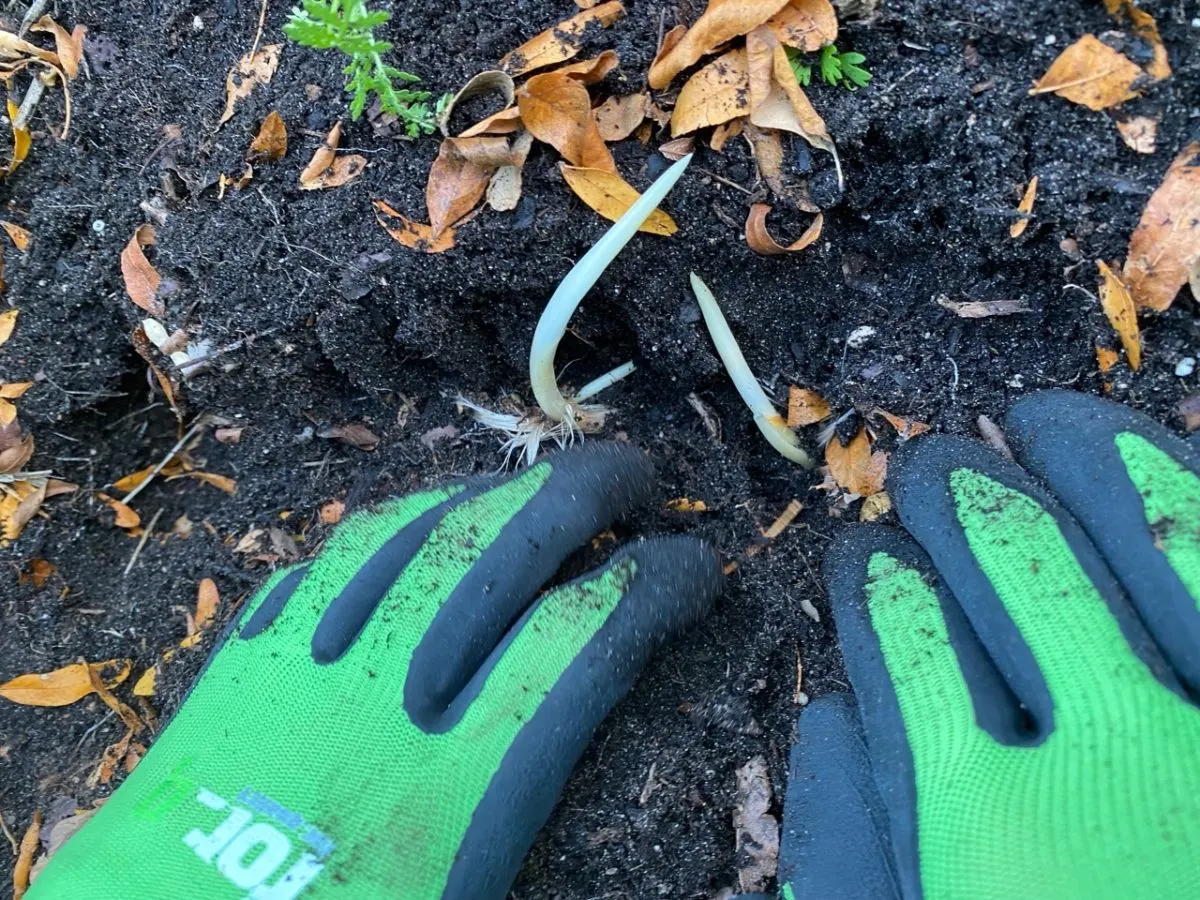
At this point, you’re probably wondering if you can still plant bulbs that have sprouted. Yes, you can. Just take into consideration the height of the bulb and ignore the height of the sprout when you bury them. Depending on how tall the sprout is, a part of it will stick up above ground. That’s perfectly normal and it will not interfere with growth, at least not in hardy bulbs such as crocuses.
However, you have to be very gentle with the sprouting ends because they are very tender. I accidentally broke a couple of them while I was leveling off the soil on top of the bulbs. I’m not expecting the broken sprouts to produce any blooms this year, but I’ll leave them in the ground for next fall.
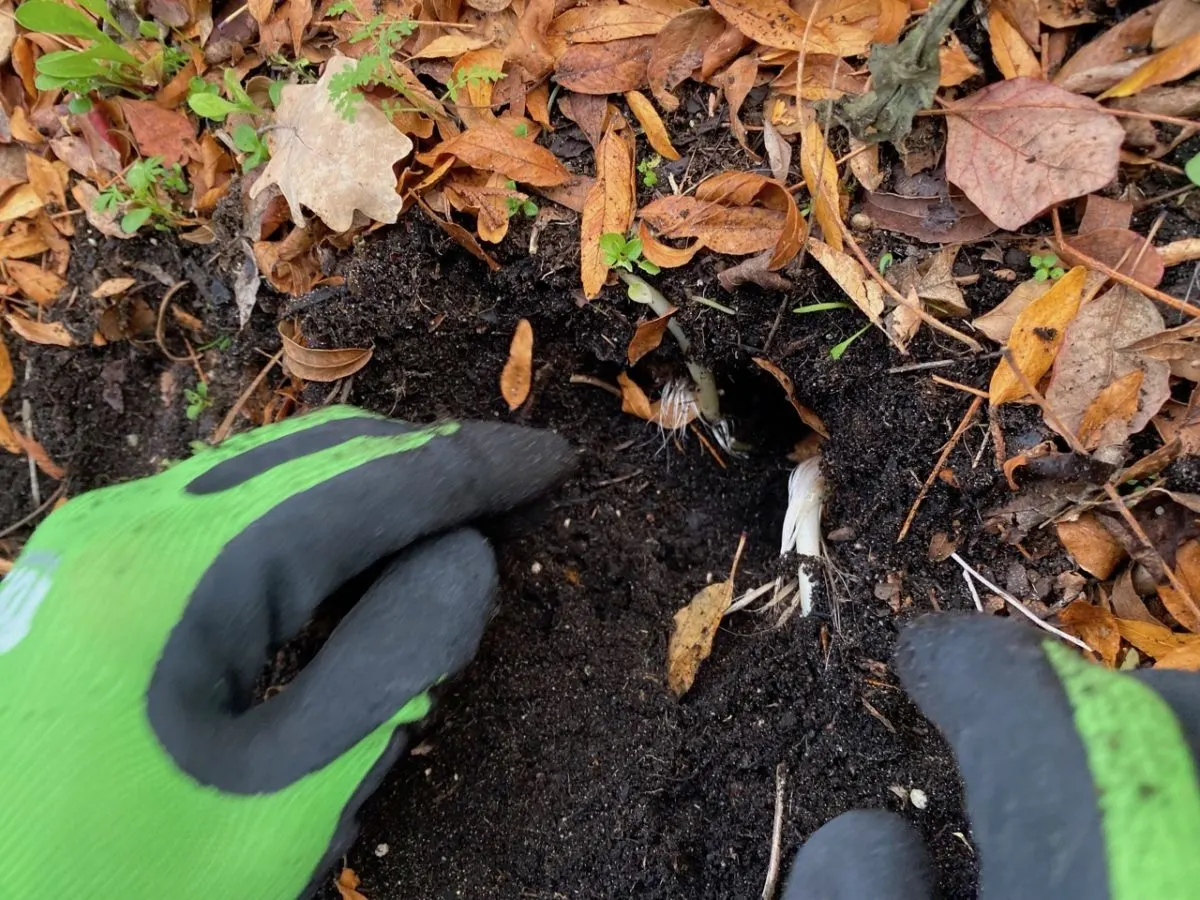
Step 4: Water and mulch the saffron crocus bulbs.
Once you’ve covered the corms with soil, water them thoroughly to help them settle in place and help jumpstart root growth. Like all perennial bulbs, saffron crocuses need plenty of water at key amounts in the growing season, with the most important being in the fall (when the bulb is about to bloom) and in the spring (when the bulbs split and self-propagate underground).
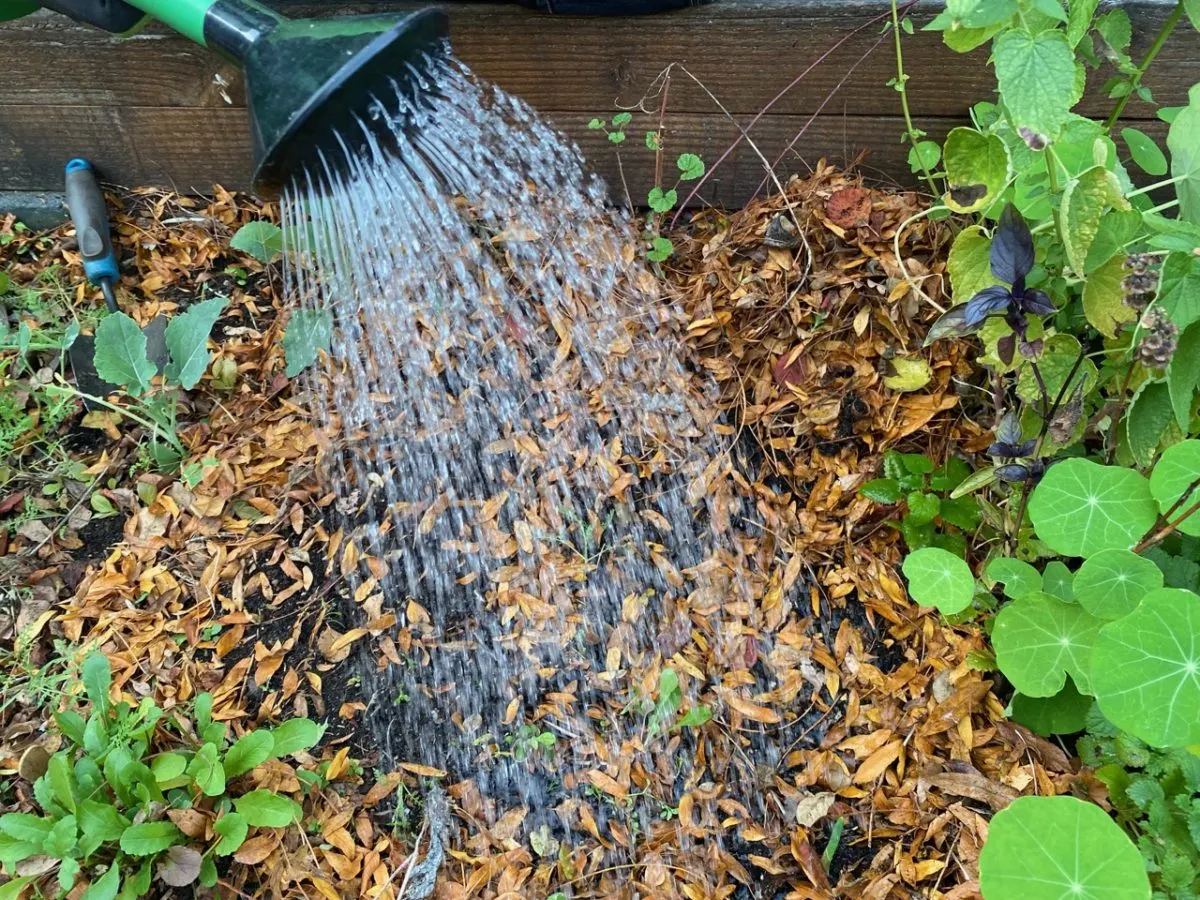
So don’t forget to keep the planting site thoroughly moist during spring; even if you can’t see any sign of life from your crocuses, nature is hard at work below soil level.
Like every bulb planting session, I finish this one off by adding a thick layer of mulch. And since it’s fall, I’m using dry leaves to tuck in the crocus corms. The mulch will keep the moisture in the soil and protect the bulbs from fluctuations in temperature.
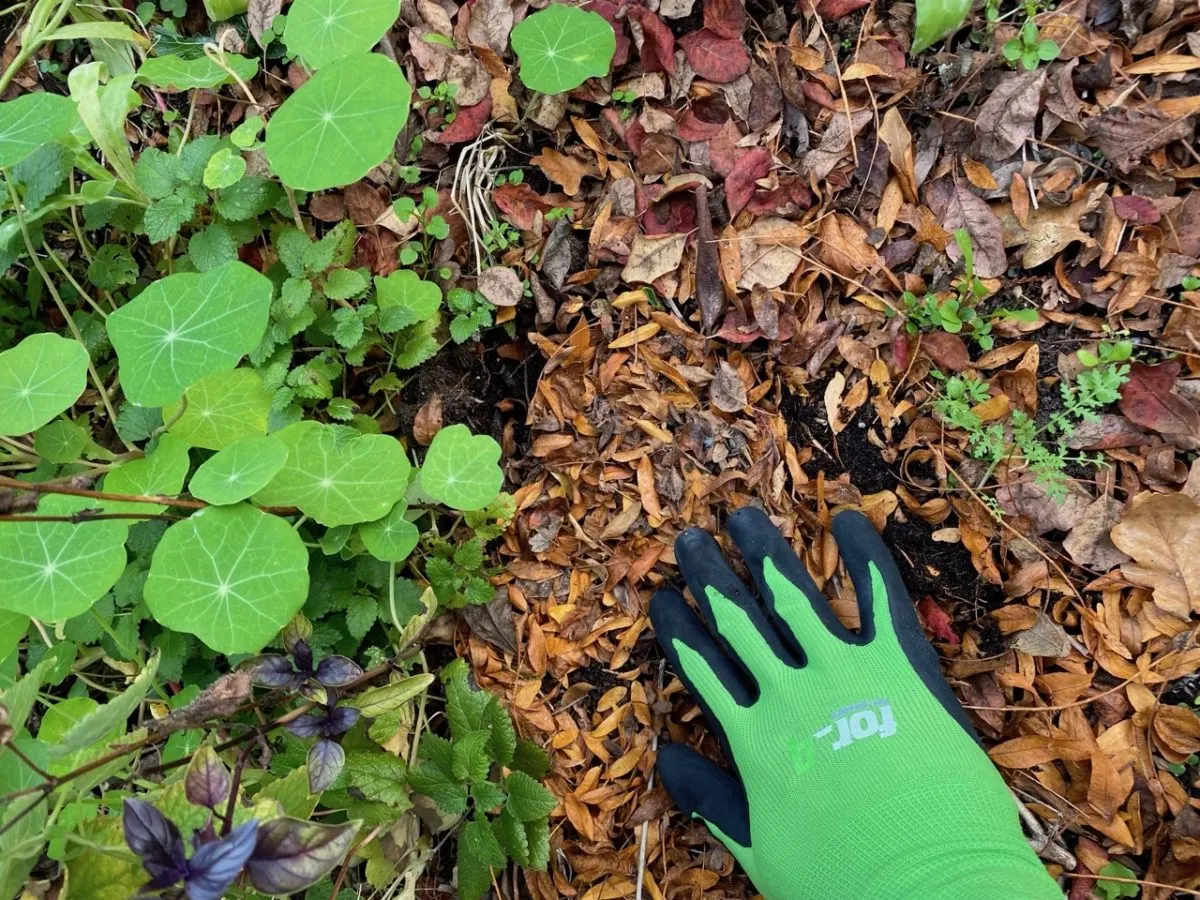
If you started with high-quality corms, you can expect to harvest saffron about six weeks after you’ve planted the bulbs. This timeline also depends on how late into the season you planted and on your weather during the fall.
To my surprise – and utter delight – it only took a week for the crocuses to emerge and less than two weeks for them to open. So I was able to harvest saffron from about half of the bulbs only two weeks after I planted them.
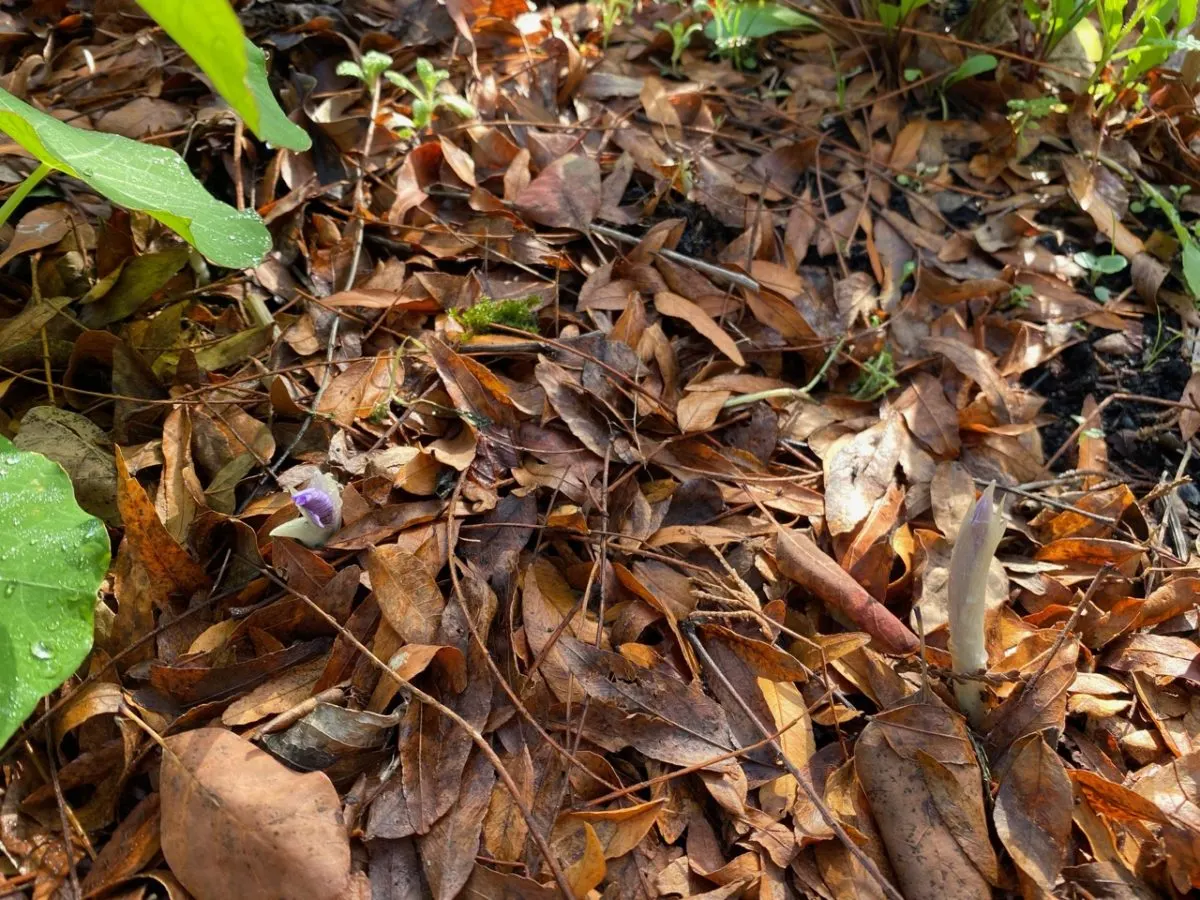
I suspect my good luck was partly due to having planted bulbs that were already sprouting and partly due to the very favorable weather we’ve been having this November – chilly (but not freezing) and rainy (but not relentless rain).
How to Harvest Saffron
As I’ve already mentioned, saffron crocus flowers bloom for a very short period of time. About a week, if you’re lucky. If you wait for the flower to fully open up, you’ll be able to clearly see the three dark-red stigmas.
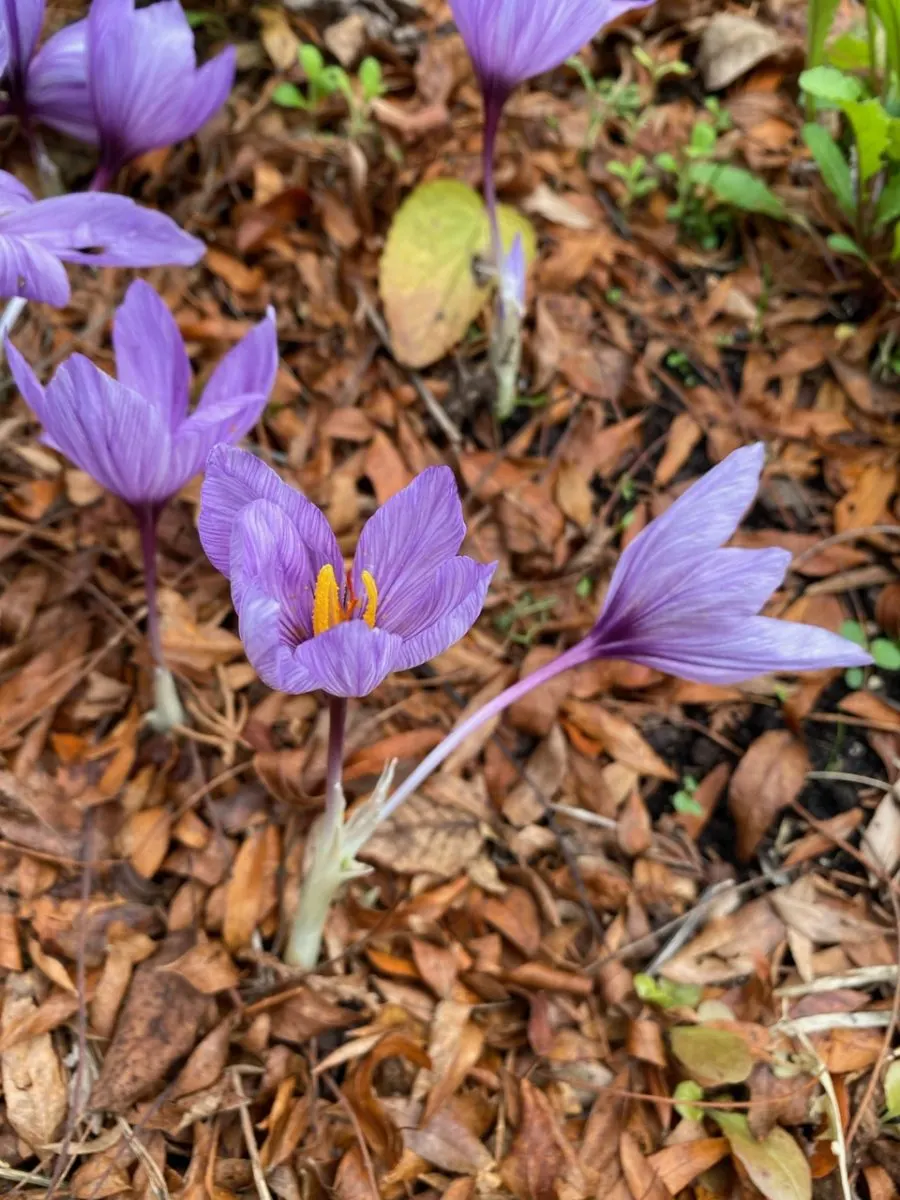
I’ve watched videos of commercial growers plucking off the entire bloom just to reach the saffron strands. I don’t think that’s necessary on a small scale, so I leave the flowers in the garden and enjoy the sight of them for another week.
Just pick the three burgundy-red threads from every flower using your fingers or a pair of tweezers. If you use tweezers, don’t squeeze too hard so as not to section off the saffron in the middle. If you’re using your fingers, grab the strands from as close to the middle of the flower as possible.
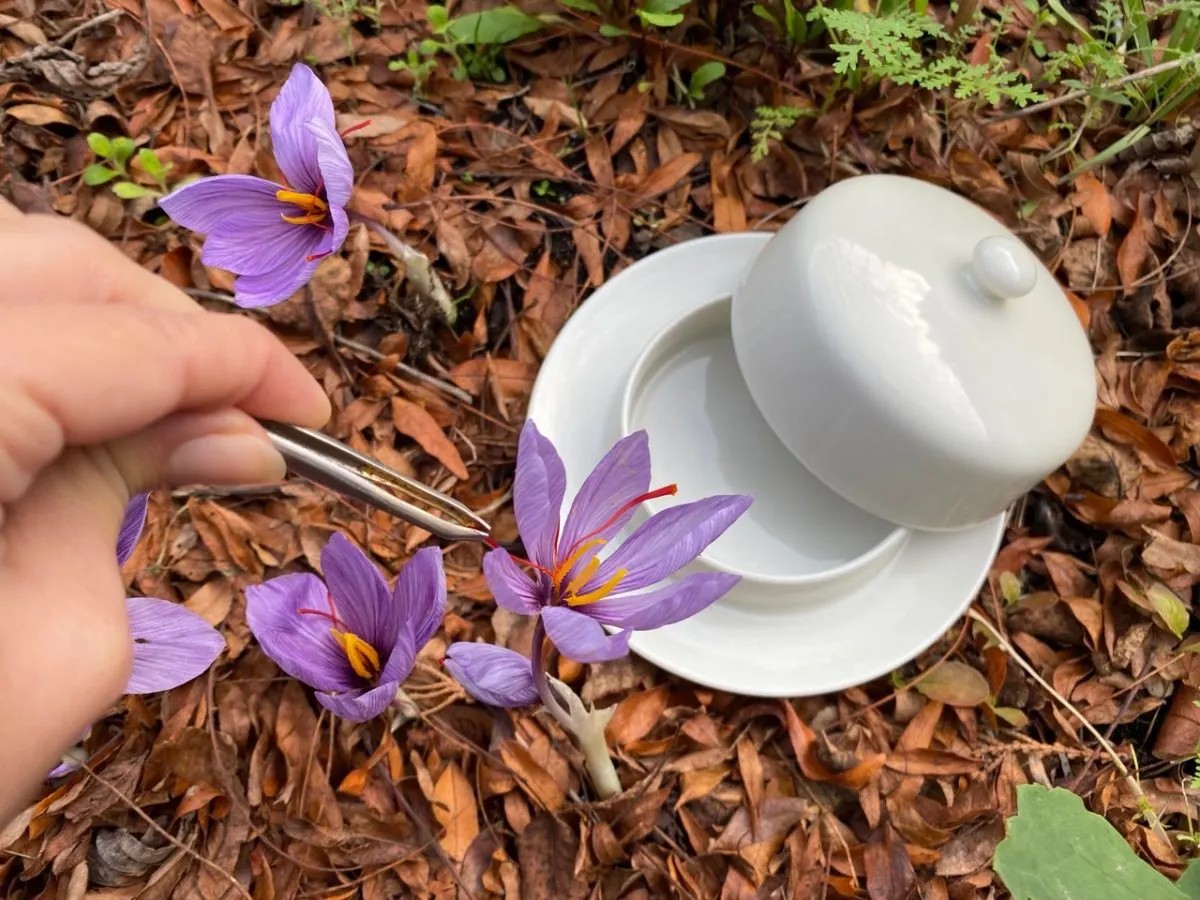
I use an empty butter dish to store the saffron during harvesting. The strands are extremely light, so even the slightest breeze can blow them away once you take them off the flower. Yes, it takes slightly longer to cover the dish as you move from one crocus to another, but it’s well worth it.
While you’re doing this gentle operation, take the opportunity to breathe in the sweet fragrance of the saffron crocus. The same subtle scent will carry over to your dishes.
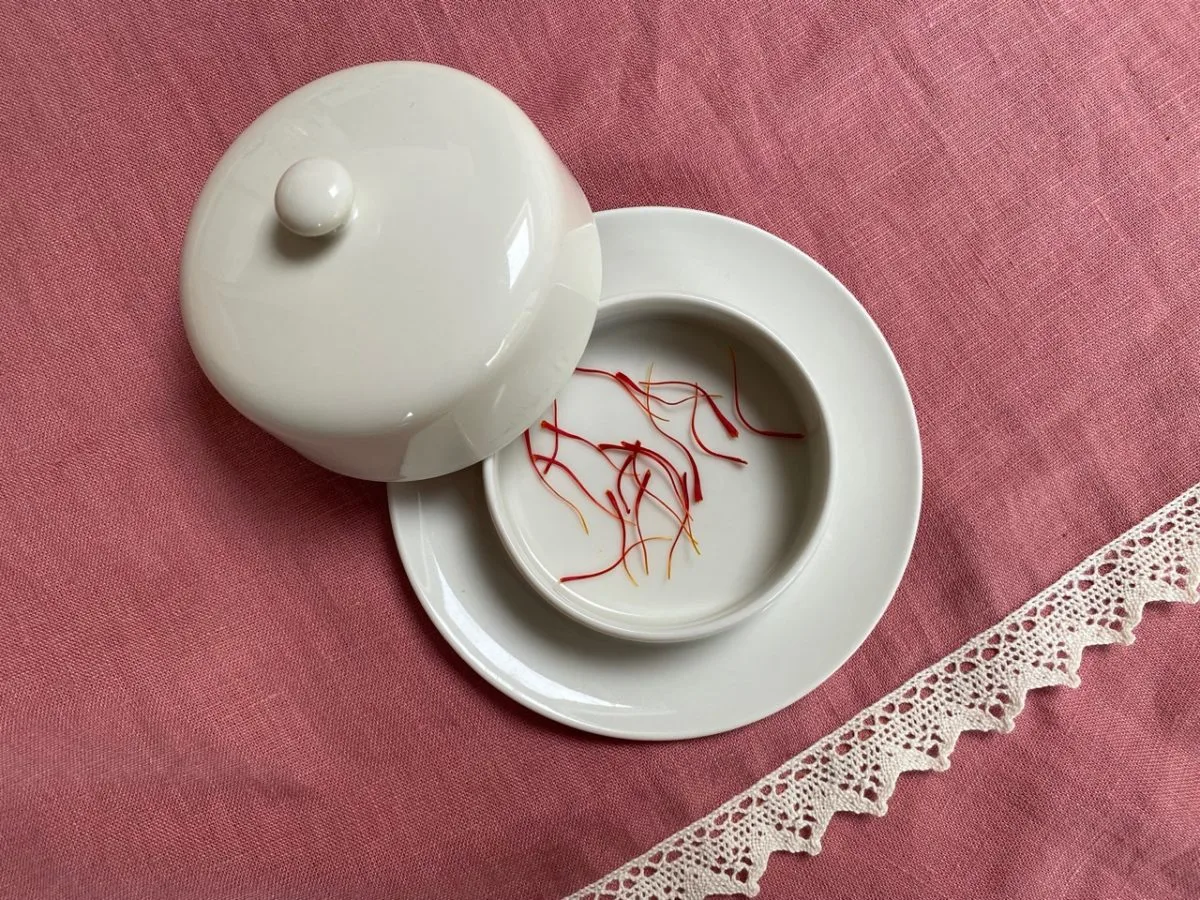
I’ll then transfer the saffron to a paper towel to finish drying up completely. Fresh saffron can stain, so I wouldn’t recommend drying them on anything else.
Place the saffron in a sunny windowsill or a warm spot for a few days until it dries. Let me reiterate that you have to keep it away from drafts. Even the slightest breeze will scatter it around the room.
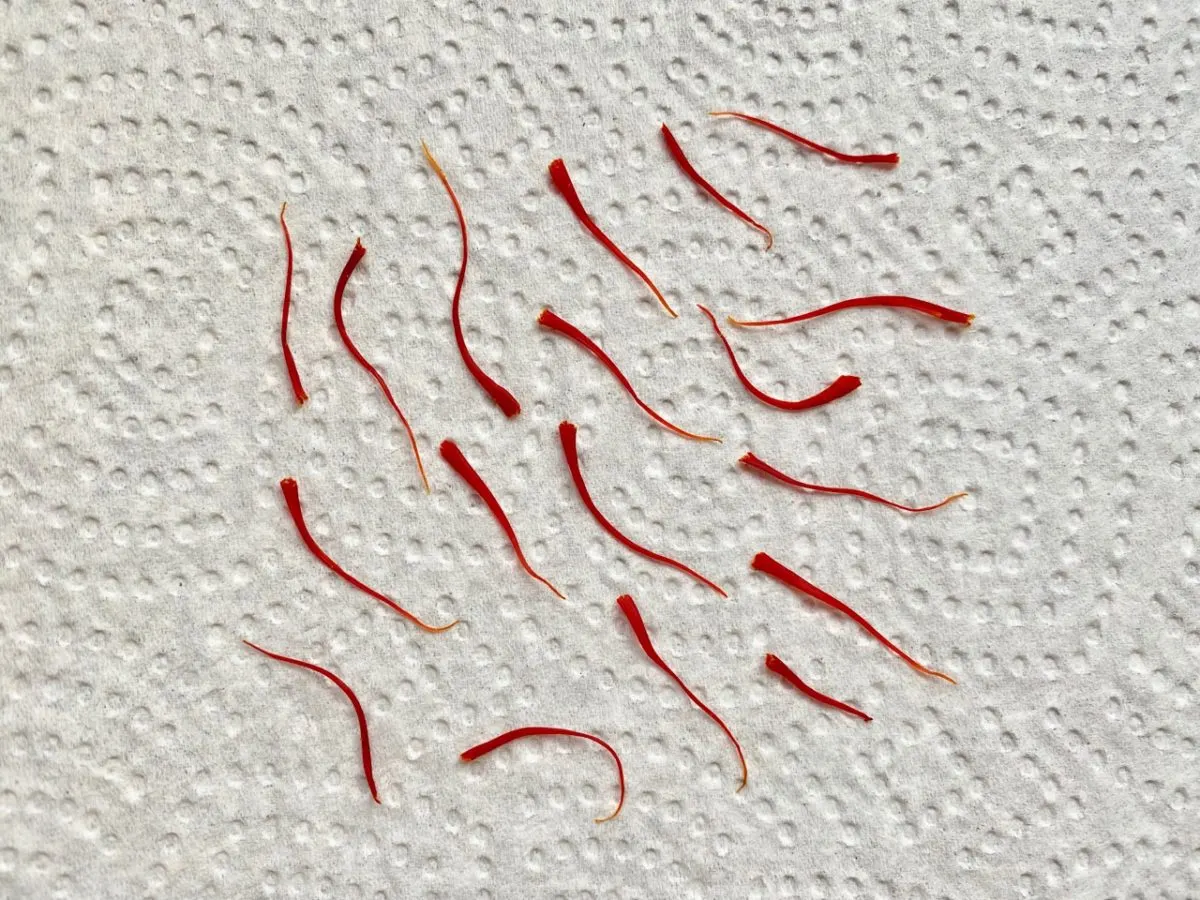
You can then store it in a jar, preferably in a dark and dry location. It’s really important to dry the saffron before storing it. Basically, treat it the same way you’d treat edible dry flowers such as calendula and chamomile. If you seal it in a container before fully drying it, the strands will get moldy and all your hard work will have been in vain.
After the flowers are spent, you’ll be left with wispy crocus foliage. It’s important to leave the foliage on the plant and wait until it dies back naturally before you remove it. The leaves play a critical role in collecting and directing energy towards the bulb.
I hope I have convinced you to give the saffron crocus a try this fall. I’m confident that once you’ve tasted saffron, you won’t need any convincing.

